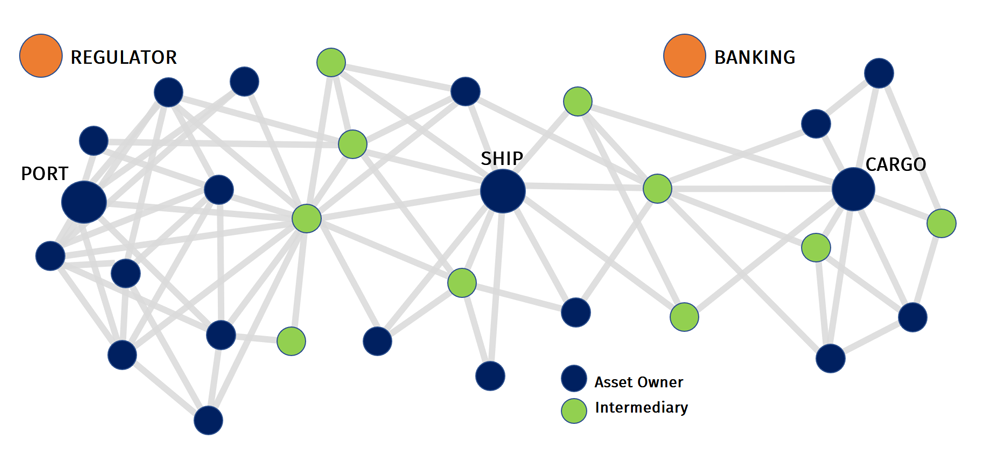
Without maritime shipping which enables 90% of world trade, Industry 4.0 will have a gaping hole in its meaning and development. On the other hand, maritime commerce cannot have any form of i4 transformation without first getting itself digitised, to optimise use of the 3 key digital drivers in A.I., Big Data, and Cloud computing.
Then, why is maritime digitalisation even a topic? This is because:
That is why in order to achieve a maritime transformation without a major external hand playing its role (like a major disruption coming from tech giants the likes of Alibaba and Amazon), it is more practical for the industry and policy makers to focus at the basic, or digitalisation at operational level. In my humble opinion, in view of the low current adoption rate, this is where best returns within a shortest time are likely to result from a wide-spread digitalisation adoption.
The Maritime Web – mostly not digitised:

This web is just a symbolic diagram of the numerous participants and multiple nodes involved in any maritime shipment. This web exists to keep the expensive ship, its cargo and people on board and multiple operations going as smoothly as possible. Most of these participants are service-providers and ‘time-takers’ in this ‘derived-demand’ business. In other words, they have to ‘stand-by’ all the time which explains the reactive nature in maritime shipping.
Because of its contact with life, property and the environment, it is also highly regulated in many aspects: coupled with banking requirements, many documents and documentations are required. Multiplied by the nodes in the complex web, with few standardised formats, the reliance on people grows. While digitalisation can be a boon, the current efficiently-evolving system was not designed for it. So many of these stakeholders, even some relatively large corporations, are simply not effectively digitised.
Barriers to change is not about technology or digitalisation
So even now that there may be an easier and faster digitised option (like using a lighter to make a flame), some of the players will still say they are doing their work (making fire with sticks) very efficiently. They now become the gatekeepers as their instinctive defense is piqued against Digitalisation, a the change of system.
So, let’s put our efforts and focus on helping companies digitise for now.
This is my small bit in demystifying maritime commerce and innovation, please share this article if you find it helpful. Thank you!
Author’s LinkedIn Profile:
<script src="//platform.linkedin.com/in.js" type="text/javascript"></script>
<script type="IN/MemberProfile" data-id="https://www.linkedin.com/in/chye-poh-chua-bb022954" data-format="inline" data-related="false"></script>
I invest, mentor and grow a group of startups which specialize and focus on creative maritime commerce innovations and solutions via digitalization, data-science applications, work tools, etc.
I believe for now, ShipsFocus’ maritime venture studio model is an appropriate one to most efficiently and effectively overcome the BIG innovation conundrum.
